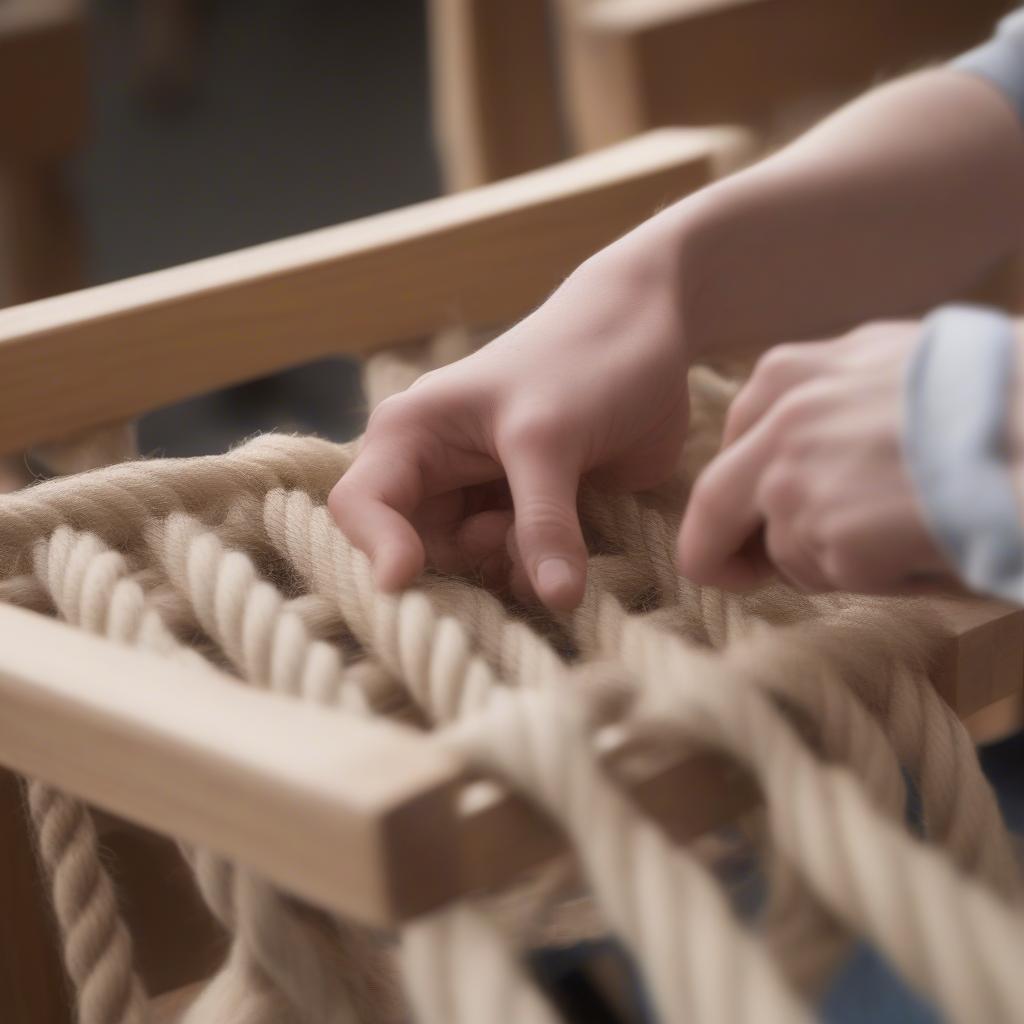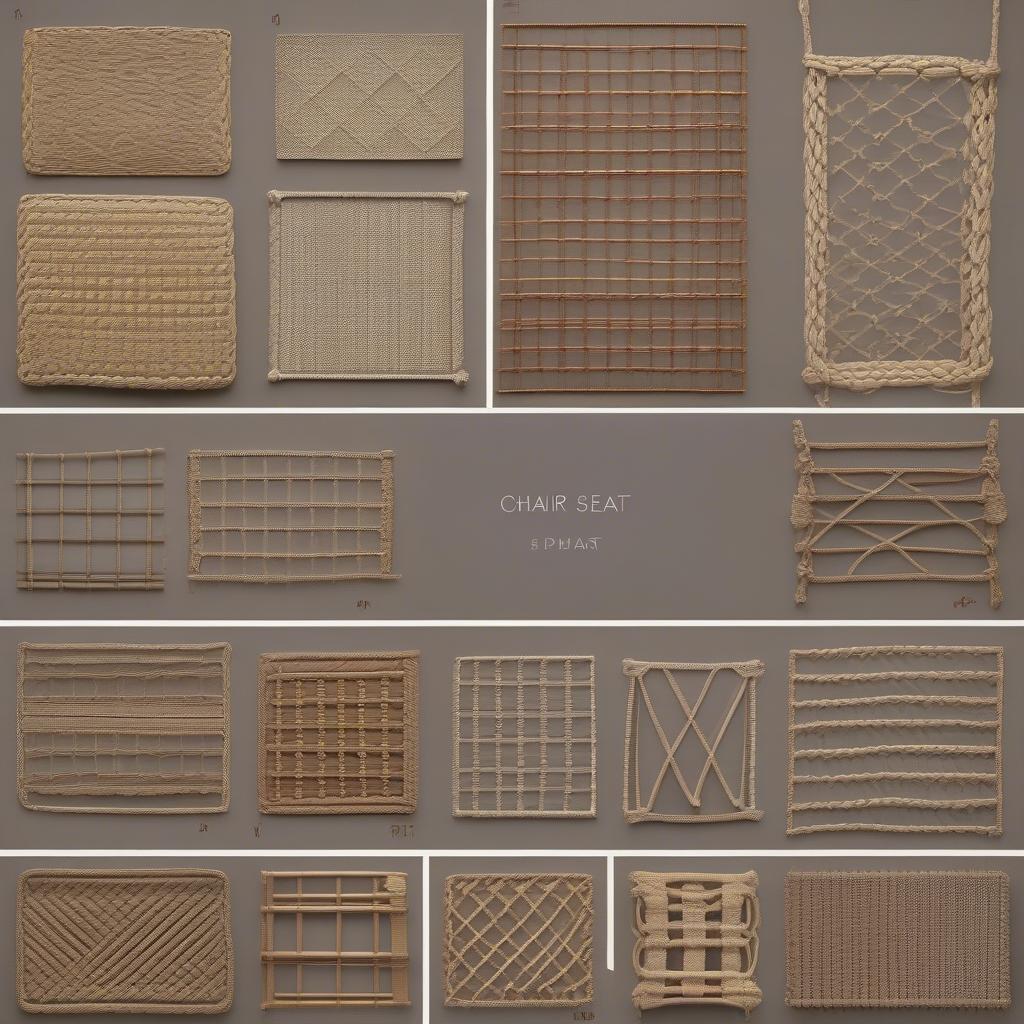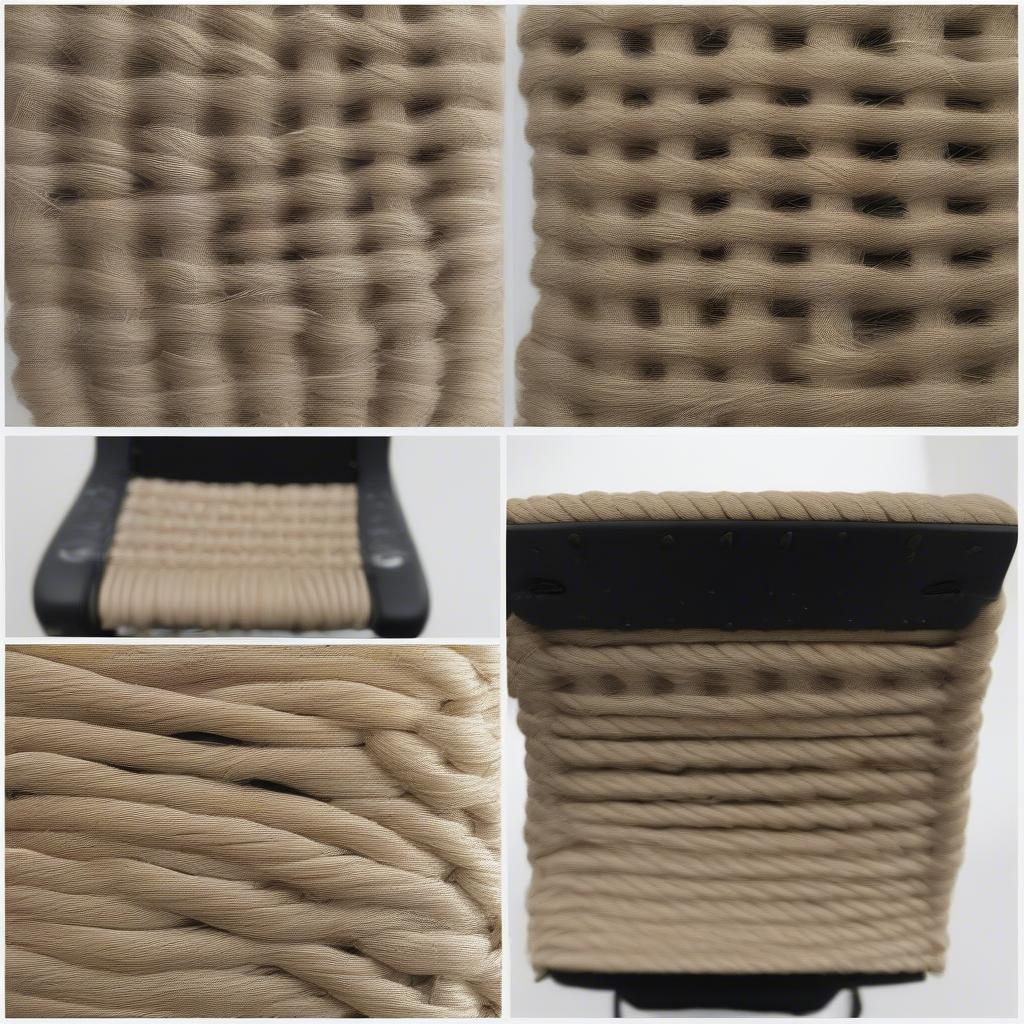Weave Chair
Weave a Chair Seat with Rope: A Comprehensive Guide
Learning to Weave A Chair Seat With Rope offers a rewarding way to revitalize old furniture or add a unique touch to a new piece. Whether you’re a seasoned crafter or just starting out, this guide will provide you with the knowledge and techniques to create a beautiful and durable rope chair seat.  Beginner's Guide to Weaving a Rope Chair Seat
Beginner's Guide to Weaving a Rope Chair Seat
Choosing the Right Rope for Your Chair Seat
The type of rope you choose is crucial for the comfort, durability, and overall aesthetic of your chair seat. Natural fibers like cotton, jute, and sisal offer a comfortable and eco-friendly option, while synthetic ropes like nylon and polypropylene provide excellent weather resistance. Consider the chair’s intended use and your desired style when selecting your rope. For indoor chairs, a softer, natural fiber like cotton might be preferable. Outdoor furniture, however, would benefit from the durability of polypropylene. chair weaving materials helps you explore the different options available.
Understanding Rope Thickness and Length
The thickness of your rope will impact the density and comfort of the woven seat. Thicker ropes create a sturdier seat with a more rustic look, while thinner ropes allow for more intricate patterns. To determine the necessary rope length, measure the chair frame’s weaving area and multiply it by a factor that accounts for the weaving pattern and knotting. This factor typically ranges from 8 to 10, depending on the complexity of the design.
Preparing Your Chair Frame
Before you begin weaving, ensure your chair frame is sturdy and free of any loose parts. A stable frame is essential for a successful and long-lasting woven seat. If your chair has an existing seat, remove it completely. Sand down any rough edges and apply a sealant or primer to protect the wood and improve the rope’s adhesion.
Tools and Materials You’ll Need
Having the right tools and materials on hand will simplify the weaving process. You’ll need:
- Rope (chosen based on the considerations above)
- Scissors or sharp knife
- Measuring tape
- Chair frame
- Optional: Wood sealant or primer
Weaving Techniques: From Basic to Advanced
Various weaving patterns can be used to create unique and visually appealing chair seats. The most basic pattern involves weaving the rope horizontally and vertically across the chair frame, creating a simple grid. More advanced techniques involve diagonal weaving, creating intricate knots, and incorporating decorative elements.
The Basic Weaving Pattern: Step-by-Step
- Start by tying a knot at one corner of the chair frame.
- Weave the rope horizontally across the frame, securing it at the opposite end.
- Bring the rope back across the frame vertically, securing it adjacent to the starting knot.
- Continue weaving horizontally and vertically, creating a grid pattern.
- Once the seat is fully woven, tie off the rope securely at a corner.
 Different Rope Chair Seat Weaving Patterns
Different Rope Chair Seat Weaving Patterns
“Choosing the right rope is like selecting the foundation of a house; it’s essential for stability and longevity.” – John Carter, Master Weaver
Exploring Advanced Weaving Techniques
Once you’ve mastered the basic weave, you can experiment with more advanced techniques. Diagonal weaving creates a visually dynamic pattern, while incorporating decorative knots can add a touch of artistry to your chair seat. Resources like chair weaving materials can provide further inspiration and guidance.
“Don’t be afraid to experiment with different patterns and knots; that’s where the real creativity lies.” – Maria Sanchez, Textile Artist
Finishing Touches and Maintenance
Once you’ve finished weaving, trim any excess rope and secure the ends. Applying a sealant to the rope can help protect it from wear and tear and maintain its appearance. Regular cleaning and avoiding prolonged exposure to harsh weather conditions will help prolong the lifespan of your woven chair seat.  Finished Rope Chair Seat and Maintenance
Finished Rope Chair Seat and Maintenance
Conclusion
Weaving a chair seat with rope is a fulfilling project that allows you to personalize your furniture and create a unique piece. By following this guide and choosing the right materials and techniques, you can create a beautiful and durable chair seat you’ll enjoy for years to come. So, gather your materials and start weaving your own masterpiece! Remember chair weaving materials for helpful resources.
FAQ
- What type of rope is best for outdoor chairs?
- How much rope do I need for a standard chair seat?
- What are some common weaving patterns for chair seats?
- How do I maintain my woven rope chair seat?
- Where can I find more resources on chair weaving techniques?
- What tools do I need to weave a chair seat with rope?
- Can I use different colors of rope to create patterns?
Common scenarios:
- Scenario 1: The rope keeps fraying while weaving.
- Scenario 2: The woven seat feels too loose or unstable.
- Scenario 3: I’m having trouble creating a consistent weaving pattern.
Suggested Further Readings:
- Guide on selecting appropriate chair weaving materials.
- Advanced chair weaving techniques.
